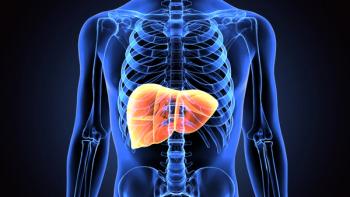
For Decades They Went Up and Up. Why Are Liver Cancer Cases and Deaths Now Leveling Off and Possibly Declining?
Testing and effective treatment of hepatitis C with the direct-acting antivirals is the most explanation.
For decades, the number of new cases of liver cancer increased. Although researchers and clinicians have developed new treatments, historically, liver cancer has been a deadly cancer, so with the rising incidence came a rising number of deaths. It is not nearly as common as breast or colorectal cancer is the fifth leading cause of cancer death among men in the U.S. and the seventh leading cause among women.
But since approximately 2014-2015, liver cancer incidence in the U.S. has been fairly level for men and for women, increased only slightly, according to projections in the 2023 edition of the American Cancer Society’s 2023 annual “
The report project that there will be 41,210 new cases of liver cancer in the U.S., this year and that 29,380 people will die from the disease.
The society’s
The National Cancer Institute has slightly different figures but the overall picture is the same: decades of increase followed by level or declining trends since the mid-2010s:
Intrahepatic bile duct cancer gets tallied as liver cancer in the statistics kept by the cancer society and other organizations. The cancer society says just under one-fifth (19%) of liver cancers are intrahepatic bile duct cancers, also known as cholangiocarcinoma. Most cases of liver cancer — 72%, according to cancer society’s statistics — are hepatocellular carcinoma, cancer which arises from the hepatocytes, the cells that makes 80% of the liver's mass.
The incidence and deaths from hepatocellular carcinoma have also been declining, trends that are bringing down the overall numbers for liver cancer.
In an analysis of the “declining disease burden” of hepatocellular carcinoma published last year in the journal
The pattern was the roughly the same with deaths from hepatocellular carcinoma, although it lagged two years behind the incidence trends The incidence-based mortality (population mortality attributable to a specific tumor type) for hepatocellular carcinoma went up from for two decades, peaked in 2013, and then decreased by 3.2% per year from 2013 to 2017, according to the analysis by Han and colleagues. The decline in deaths was sharper for men than it was for women.
This research was done using data from the Surveillance, Epidemiology and End Results (SEER) cancer registries. SEER data for cancer incidence and death considered some of the most reliable in the world.
The why
The analysis that Han and the other researcher did was not designed to identify the reasons for the trends. Even so, they discuss various explanations for the decline in hepatocellular carcinoma and, by extension liver cancer.
The major risk factors for hepatocellular carcinoma are metabolic disorders, hepatitis C, alcohol and hepatitis B. Researchers have made calculations that attribute the cases to the risk factors. Han and his colleagues cite findings that show that 32% of cases can\ attributed to metabolic disorders, 20.5% to hepatitis C, 13.4% to alcohol and 4.3% to hepatitis B.
As Han and colleagues point out, the declining incidence of — and deaths from — hepatocellular carcinoma is very likely not related to metabolic disorders, which include conditions such as diabetes. The proportion of American with metabolic disorder is increasing. That trend cannot explain why hepatocellular carcinoma is decreasing.
Instead, the strongest evidence is that control of hepatitis C is the main reason for the decline in hepatocellular carcinoma incidence and deaths. For one thing, the baby boom cohort was disproportionately affected by hepatitis C through exposure to injection drugs and contaminated blood products. As Han and his colleagues note, while the baby boomer demographic is aging into old age, the younger cohorts that coming up behind them demographically have lower incidence and death rates from hepatitis C.
Another major factor in the decline in hepatitis C and therefore hepatocellular carcinoma is the introduction of
Testing for hepatitis C has also become more common and contributed to better control of the disease. In the 2023 “Facts and Figures” report, the cancer society mentions that the Centers for Disease Control and Prevention and the United States Preventive Services Task Force (USPSTF) recommend one-time testing for hepatitis C of all adults; testing of pregnant people every pregnancy; and regular testing of people at high risk, which includes people who inject drugs. The USPSTF changed its recommendations for hepatitis C screening to include all adults in 2020. Its previous position was that screening should be limited to people in high-risk groups and to baby boomers (people born between 1945 and 1965).
Another possible factor in the decline in liver disease and hepatocellular carcinoma in particular is vaccination against hepatitis B (there is no vaccine against hepatitis C). The analysis done by Han showed a steep decline in hepatocellular carcinoma, which the researchers said is most likely the result of hepatitis B vaccination. But they also point out that only a small fraction of hepatocellular carcinoma cases can be attributed to hepatitis infection and that it “might take a long time to observe the efficacy of (hepatitis B vaccination) in preventing hepatocellular carcinoma.”
Newsletter
Get the latest industry news, event updates, and more from Managed healthcare Executive.

















































